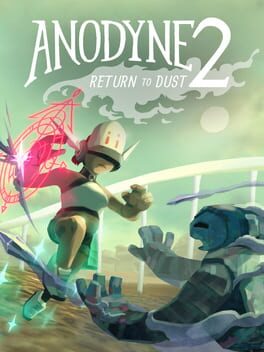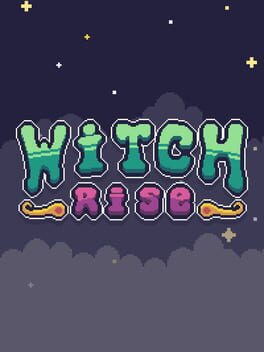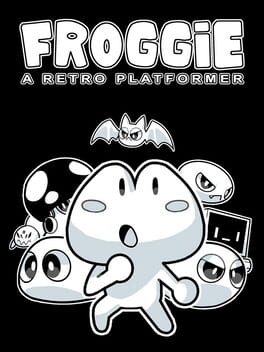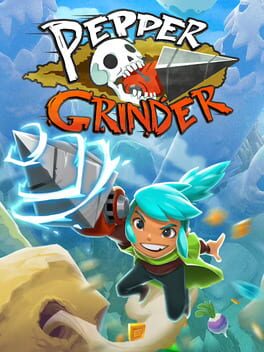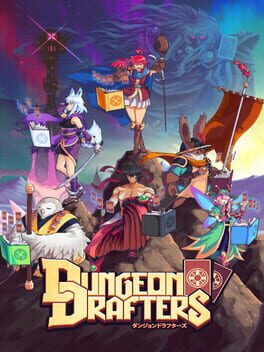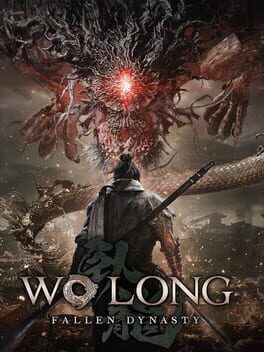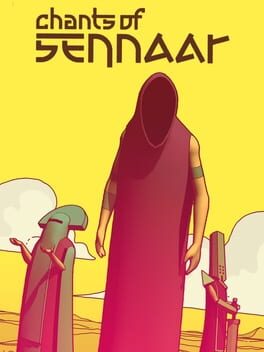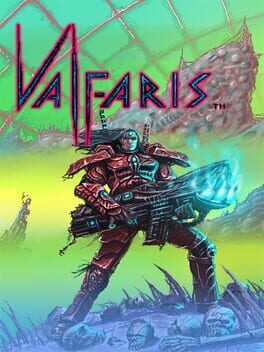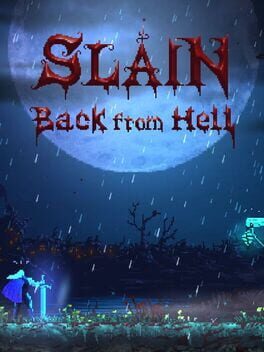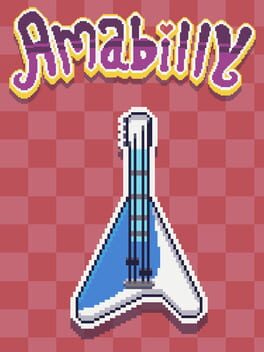AlexTheGerman
I couldn't even bring myself to playing this in earnest: I greatly dislike the look, the controls feel wobbly, the writing feels overdone from the get-go, and offering only few 2D sequences feels like a disconnect from why people played the first one.
Also, I'm really not a fan of this recent trend of 2D games changing perspective and sometimes even genre with the sequel, and Anodyne 2 is no exception. Now that indie developers have the technology to emulate the ugly, washed out graphic style of the PS1, playing a game like this feels like a step backwards instead of forwards.
Most egregiously, though, starting the game with a direct message from the makers that literally explain the themes of the game you are about to play is a graceless, one might say tasteless decision even, and one that made me quit the game immediately.
Maybe one day, there will be a proper sequel to Anodyne. I'll be there.
Also, I'm really not a fan of this recent trend of 2D games changing perspective and sometimes even genre with the sequel, and Anodyne 2 is no exception. Now that indie developers have the technology to emulate the ugly, washed out graphic style of the PS1, playing a game like this feels like a step backwards instead of forwards.
Most egregiously, though, starting the game with a direct message from the makers that literally explain the themes of the game you are about to play is a graceless, one might say tasteless decision even, and one that made me quit the game immediately.
Maybe one day, there will be a proper sequel to Anodyne. I'll be there.
2013
This game has fhaunted me since it first came out: I always found its weird title and obvious parallels to classic, top-down Zeldas intriguing, but Anodyne also carried this air of the forbidden, perhaps occult that I could never really grasp. After finishing it, I now know why.
Pros:
+ the overall gameplay is a good emulation of 2D Zeldas
+ the weird atmosphere is memorable and rare in the genre
+ a lot of secrets and optional collectables to discover...
+ especially in the post-game, which adds a game-breaking item
+ the entire soundtrack is a certified banger
+ the soundscape harkens back to old survival horror games
+ frequent references to other games and franchises
+ the visual presentation is distinct...
Cons:
- ...but feels unpolished and limiting
- weird aspect ratio and jarring screen transitions
- later story sections necessitate tasteless violent actions
- map gives little information and cannot be edited
- frequent glitches and bugs give an unfinished feel
- jumping is broken and makes sequence breaking possible
- broom combat is sluggish and unsatisfying
- final climactic events feel abridged and crude
- the writing is a bit too obtuse for my taste
Playtime: 6 hours, with some usage of a guide in the middle. All regular cards and upgrades acquired.
Magic Moment: Pushing someone off a bridge in a certain section, only to jump into a strange new world.
Blagic Moments: Fighting the later bosses and beating them in seconds as a result of the world. Getting to the end, only to find out the most obvious twist you could think off.
Verdict:
Anodyne is a weird game, and it wears its weirdness with pride. From the obtuse storyline to the mystifying characters cobbled together from different fantasy worlds, you never really know what game you are playing. However, that atmosphere and and feeling of entering a liminal space is the game's greatest strengths.
From a pure gameplay perspective, though, most of the systems like movement or combat feel unfinished or unsatisfying at best. But whenever I felt like a puzzle or a combat situation was frustrating, another banger song pulled me back in. And so I stuck with it, against all odds.
As a result, this is one of those games where the journey is the destination, and I would only recommend it to players who are willing to bite their way through the jank. But those people may actually end up loving it.
Pros:
+ the overall gameplay is a good emulation of 2D Zeldas
+ the weird atmosphere is memorable and rare in the genre
+ a lot of secrets and optional collectables to discover...
+ especially in the post-game, which adds a game-breaking item
+ the entire soundtrack is a certified banger
+ the soundscape harkens back to old survival horror games
+ frequent references to other games and franchises
+ the visual presentation is distinct...
Cons:
- ...but feels unpolished and limiting
- weird aspect ratio and jarring screen transitions
- later story sections necessitate tasteless violent actions
- map gives little information and cannot be edited
- frequent glitches and bugs give an unfinished feel
- jumping is broken and makes sequence breaking possible
- broom combat is sluggish and unsatisfying
- final climactic events feel abridged and crude
- the writing is a bit too obtuse for my taste
Playtime: 6 hours, with some usage of a guide in the middle. All regular cards and upgrades acquired.
Magic Moment: Pushing someone off a bridge in a certain section, only to jump into a strange new world.
Blagic Moments: Fighting the later bosses and beating them in seconds as a result of the world. Getting to the end, only to find out the most obvious twist you could think off.
Verdict:
Anodyne is a weird game, and it wears its weirdness with pride. From the obtuse storyline to the mystifying characters cobbled together from different fantasy worlds, you never really know what game you are playing. However, that atmosphere and and feeling of entering a liminal space is the game's greatest strengths.
From a pure gameplay perspective, though, most of the systems like movement or combat feel unfinished or unsatisfying at best. But whenever I felt like a puzzle or a combat situation was frustrating, another banger song pulled me back in. And so I stuck with it, against all odds.
As a result, this is one of those games where the journey is the destination, and I would only recommend it to players who are willing to bite their way through the jank. But those people may actually end up loving it.
2011
While Wizorb is an honest attempt at an update to the age-old formula of breaking down bricks until there are no more bricks to break, the final product is riddled with more than just a few holes.
Pros:
+ colorful pixel art style that looks good on a big TV
+ magic system is an fresh update to the Breakout formula
+ levels hide shops and bonus stages
+ bosses require specific strategies
+ levels can be replayed and money can be farmed
Cons:
- difficulty is much too high, mostly because...
- ...lives and magic don't get replenished between levels
- life system feels anachronistic and at odds with the save system
- secondary magic is cumbersome to use
- bought items are expensive and immediately lost upon dying
- levels all feel alike and later ones are mostly luck-based
- town building system has almost no bearing on the gameplay
- the entire thing feels like a lazy mobile game
Playtime: 9 hours with final boss beaten and copius use of save-scamming towards the end, no extra content explored.
Blagic Moment: Dying to a boss, only to having to replay everything leading up to him. Realizing that to this day, there is still no worthwhile update to Breakout
Verdict:
No idea what reviewers were smoking back in the days of the Xbox 360 when this came out originally and received rave reviews, but Wizorb is at best a failed attempt at Breakout with a few good ideas that never really coverge. The high difficulty combined with a terrible life and save system lead to more frustration than anyone should have to suffer through, and there is never a moment where you feel like this couldn't have been produced in the days of the SNES. So why should anyone play this on Switch?
The answer is, they shouldn't, and the wait for a really modern, fun take on breaking blocks with a Pong paddle continues.
Pros:
+ colorful pixel art style that looks good on a big TV
+ magic system is an fresh update to the Breakout formula
+ levels hide shops and bonus stages
+ bosses require specific strategies
+ levels can be replayed and money can be farmed
Cons:
- difficulty is much too high, mostly because...
- ...lives and magic don't get replenished between levels
- life system feels anachronistic and at odds with the save system
- secondary magic is cumbersome to use
- bought items are expensive and immediately lost upon dying
- levels all feel alike and later ones are mostly luck-based
- town building system has almost no bearing on the gameplay
- the entire thing feels like a lazy mobile game
Playtime: 9 hours with final boss beaten and copius use of save-scamming towards the end, no extra content explored.
Blagic Moment: Dying to a boss, only to having to replay everything leading up to him. Realizing that to this day, there is still no worthwhile update to Breakout
Verdict:
No idea what reviewers were smoking back in the days of the Xbox 360 when this came out originally and received rave reviews, but Wizorb is at best a failed attempt at Breakout with a few good ideas that never really coverge. The high difficulty combined with a terrible life and save system lead to more frustration than anyone should have to suffer through, and there is never a moment where you feel like this couldn't have been produced in the days of the SNES. So why should anyone play this on Switch?
The answer is, they shouldn't, and the wait for a really modern, fun take on breaking blocks with a Pong paddle continues.
2019
I know, I know, I'm terribly late to this party, which means I can only repeat what most everyone else has been saying for years: A Short Hike is a wonderful game and a real highlight among the already great amount of indie gems on the Switch.
Pros:
+ island setting creates a wonderfully cozy atmosphere
+ beautiful visuals and vistas to discover
+ grainy filter can - and should be! - turned off
+ characters and their dialog are cute and memorable
+ number of diverse quests can be solved...
+ ...and their rewards usually help with discovery
+ lots of hidden nooks and crannies to explore
+ runtime is short and perfectly tailored to the design
+ almost flawless technical performance on Switch
Cons:
- no quest or dialog log
- item management is a bit cumbersome
- no guidance system for the more complex challenges
- story never really soars to the heights of the gameplay
- ending is too abrupt
Playtime: 3 hours and 40 minutes, with all extra feathers discovered. Some achievements still unachieved, which means I have a great reason to come back to this at some point.
Magic Moments: Understanding the size of the map and the way the camera hides secrets. Finding treasure after solving a riddle. Soaring through the skies from the highest point of the map. Motorboating, of course.
Verdict:
Despite what its name might suggest, A Short Hike leaves a big impression. From the simple but memorable visuals to the deliberate design centered on slowly increasing but always engaging challenges, it's a game that invites you to enjoy your time with it. With its focus on discovery and atmosphere, it shares elements with games like Breath of the Wild, while smartly eschewing any sort of violence or combat elements to create its cozy feel.
Indeed, a real gem of a game that I would recommend without reservations.
Pros:
+ island setting creates a wonderfully cozy atmosphere
+ beautiful visuals and vistas to discover
+ grainy filter can - and should be! - turned off
+ characters and their dialog are cute and memorable
+ number of diverse quests can be solved...
+ ...and their rewards usually help with discovery
+ lots of hidden nooks and crannies to explore
+ runtime is short and perfectly tailored to the design
+ almost flawless technical performance on Switch
Cons:
- no quest or dialog log
- item management is a bit cumbersome
- no guidance system for the more complex challenges
- story never really soars to the heights of the gameplay
- ending is too abrupt
Playtime: 3 hours and 40 minutes, with all extra feathers discovered. Some achievements still unachieved, which means I have a great reason to come back to this at some point.
Magic Moments: Understanding the size of the map and the way the camera hides secrets. Finding treasure after solving a riddle. Soaring through the skies from the highest point of the map. Motorboating, of course.
Verdict:
Despite what its name might suggest, A Short Hike leaves a big impression. From the simple but memorable visuals to the deliberate design centered on slowly increasing but always engaging challenges, it's a game that invites you to enjoy your time with it. With its focus on discovery and atmosphere, it shares elements with games like Breath of the Wild, while smartly eschewing any sort of violence or combat elements to create its cozy feel.
Indeed, a real gem of a game that I would recommend without reservations.
2023
Weird title, weird logo, weird game? Unfortunately, Witch Rise is just another first-person dungeon crawler without any fresh ideas.
Pros:
+ nice retro look and old-school feel
+ enemy sprites are cute
+ not too challenging
+ difficulty scales naturally
+ a quick and breezy experience
Cons:
- close enemy attacks lack hit feedback
- even when upgraded, mana refills too slowly
- weapon upgrades make no difference on the gameplay
- upgrades are too expensive
- boss fights lack depth
- breakable walls are too hard to see
Playtime: 2 hours, with the entire map explored and almost all chests opened.
Blagic Moment: Entering a shop for the first time to realize you are never going to afford all of their stuff. Just like real life!
Verdict:
Witch Rise is a perfectly okay entry to its genre, but also offers nothing new or exciting that would make me recommend it.
If you yearn for the look and feel of old-school, first-person dungeon crawlers with sprites, I would recommend Eldritch instead, witch does a lot more with the same ingredients.
Pros:
+ nice retro look and old-school feel
+ enemy sprites are cute
+ not too challenging
+ difficulty scales naturally
+ a quick and breezy experience
Cons:
- close enemy attacks lack hit feedback
- even when upgraded, mana refills too slowly
- weapon upgrades make no difference on the gameplay
- upgrades are too expensive
- boss fights lack depth
- breakable walls are too hard to see
Playtime: 2 hours, with the entire map explored and almost all chests opened.
Blagic Moment: Entering a shop for the first time to realize you are never going to afford all of their stuff. Just like real life!
Verdict:
Witch Rise is a perfectly okay entry to its genre, but also offers nothing new or exciting that would make me recommend it.
If you yearn for the look and feel of old-school, first-person dungeon crawlers with sprites, I would recommend Eldritch instead, witch does a lot more with the same ingredients.
Rarely has a combination of game and logo been more fitting: Froggie is a simple retro platformer with a cute frog jumping around, not more, not less. And sometimes, that's just what you need.
Pros:
+ a short and sweet retro platformer
+ restarts after death are quick
+ checkpoints are placed fairly
+ difficulty curve rises slowly
Cons:
- screen transitions are slow and juddery
- hitboxes are a little rough
- enemy behavior is sometimes erratic
- jump mechanics are a bit too floaty
- EDM soundtrack is completely out of place
Playtime: 1 hour, 30 minutes, all levels cleared.
Verdict:
A perfectly fine platformer without new or unique ideas that simply does what it sets out to do. However, if you need a palate clenser between more complex games, you could certainly do worse.
Pros:
+ a short and sweet retro platformer
+ restarts after death are quick
+ checkpoints are placed fairly
+ difficulty curve rises slowly
Cons:
- screen transitions are slow and juddery
- hitboxes are a little rough
- enemy behavior is sometimes erratic
- jump mechanics are a bit too floaty
- EDM soundtrack is completely out of place
Playtime: 1 hour, 30 minutes, all levels cleared.
Verdict:
A perfectly fine platformer without new or unique ideas that simply does what it sets out to do. However, if you need a palate clenser between more complex games, you could certainly do worse.
2024
Long-awaited, hotly-anticipated, warmly received. Peppper Grinder is one of those indies that were beloved from the start, but now that it's finally out, it ... really grinds my gears.
Pros:
+ central grinder mechanic is fun to use
+ level design is good to great throughout
+ new gameplay elements are introduced regularly
+ collectables are smartly hidden
+ one playthrough is quick and easy
+ the final boss is an adequate skill check
Cons:
- turning on a dime is buggy as hell
- a general lack of polish is felt throughout
- visual look is muddy and blurry
- regular jump is imprecise and unfun to use
- hook mechanic barely works
- boss fights all play alike
- no option to restart from a checkpoint...
- ...which makes collectable hunting frustrating
- collectables only have one useful use
Playtime: 6 hours, all gold coins collected.
Blagic Moments: Getting stuck in a random piece of scenery, only to have to restart the game. Getting handed the hook out of nowhere, only to start hating it immediately.
Verdict:
Pepper Grinder is my first big disappointment of the year. It's a game that lives and dies on its mechanics, but if those very mechanics feel unpolished and imprecise, the outcome is as expected. Even if progress is quick and each new level introduces smart new challenges, you still have to look at the blurry, low-poly look for your entire playthrough, while having to face repetitive boss fights in regular intervals.
I would advise against playing this. If you yearn for something similar, play Flinthook or Super Meat Boy instead.
Pros:
+ central grinder mechanic is fun to use
+ level design is good to great throughout
+ new gameplay elements are introduced regularly
+ collectables are smartly hidden
+ one playthrough is quick and easy
+ the final boss is an adequate skill check
Cons:
- turning on a dime is buggy as hell
- a general lack of polish is felt throughout
- visual look is muddy and blurry
- regular jump is imprecise and unfun to use
- hook mechanic barely works
- boss fights all play alike
- no option to restart from a checkpoint...
- ...which makes collectable hunting frustrating
- collectables only have one useful use
Playtime: 6 hours, all gold coins collected.
Blagic Moments: Getting stuck in a random piece of scenery, only to have to restart the game. Getting handed the hook out of nowhere, only to start hating it immediately.
Verdict:
Pepper Grinder is my first big disappointment of the year. It's a game that lives and dies on its mechanics, but if those very mechanics feel unpolished and imprecise, the outcome is as expected. Even if progress is quick and each new level introduces smart new challenges, you still have to look at the blurry, low-poly look for your entire playthrough, while having to face repetitive boss fights in regular intervals.
I would advise against playing this. If you yearn for something similar, play Flinthook or Super Meat Boy instead.
2023
A roguelike deck builder with plenty of customization, cute character designs, and excellent pixel art? Sounds like my kind of game, but after more hours than I like to admit, Dungeon Drafters is one thing first and foremost: a hardcore experience for masochist.
Pros:
+ excellent pixel art and character designs
+ deck building offers plenty of customization
+ changing between playstyles is quick and easy
+ checkered world design is intuitive and quick to understand
+ five different biomes with diverse challenges are available from the start
+ town quests invite and reward experimentation
+ curio system offers even more approaches to situations
+ final dungon can be tackled at any moment
+ bosses are diverse and smartly designed
+ side-quests and minigames are fun
Cons:
- difficulty curve is extremely steep
- initial pick of starter deck is extremely important
- town portal is not available from the beginning
- enemies and hostile gizmos are too plentiful and powerful
- most curios are useless or even increase the difficulty
- bonus room unlocks are important but impossible for most builds
- final area and boss are frustratingly difficulty
- jazzy soundtrack is unique but repeats too quickly
- plenty of glitches, UI, and game logic issues
- rough technical performance on Switch
Playtime: Over 40 hours, with most curios, cards, and quests unlocked. Regular ending acquired.
Magic Moment: Unlocking a late-stage card that allows to kill many enemies in one turn, only to realize it works not as intended. Finally beating the final boss of countless of hours, only to realize there is a hidden ending that I can just look up.
Verdict:
Dungeon Drafters offers a unique mix of 16-bit visuals, deck building and roguelike elements, but its extremely high difficulty curve and lack of hand holding makes it a real challenge that delights and frustrates in equal measure. Facing a dozen enemies in small rooms and and having to check the attack patterns and sequence of action on each enemy becomes cumbersome and time consuming quickly, and elements intended to allow for greater customization like curios or health increase items don't scale quickly enough with the ever-increasing challenges. A round of fishing or playing a logic minigame helps take the steam off, sure, but the next death is always around the corner.
In short, this is a hardcore experience intended for players willing to deeply engage with its systems. Everyone else will be killed by the now-obligatory tutorial boss, only to realize that they are in for a world of cruel randomization, icy floors, and pain.
Check it out if you like the look, but don't say I didn't warn you.
Pros:
+ excellent pixel art and character designs
+ deck building offers plenty of customization
+ changing between playstyles is quick and easy
+ checkered world design is intuitive and quick to understand
+ five different biomes with diverse challenges are available from the start
+ town quests invite and reward experimentation
+ curio system offers even more approaches to situations
+ final dungon can be tackled at any moment
+ bosses are diverse and smartly designed
+ side-quests and minigames are fun
Cons:
- difficulty curve is extremely steep
- initial pick of starter deck is extremely important
- town portal is not available from the beginning
- enemies and hostile gizmos are too plentiful and powerful
- most curios are useless or even increase the difficulty
- bonus room unlocks are important but impossible for most builds
- final area and boss are frustratingly difficulty
- jazzy soundtrack is unique but repeats too quickly
- plenty of glitches, UI, and game logic issues
- rough technical performance on Switch
Playtime: Over 40 hours, with most curios, cards, and quests unlocked. Regular ending acquired.
Magic Moment: Unlocking a late-stage card that allows to kill many enemies in one turn, only to realize it works not as intended. Finally beating the final boss of countless of hours, only to realize there is a hidden ending that I can just look up.
Verdict:
Dungeon Drafters offers a unique mix of 16-bit visuals, deck building and roguelike elements, but its extremely high difficulty curve and lack of hand holding makes it a real challenge that delights and frustrates in equal measure. Facing a dozen enemies in small rooms and and having to check the attack patterns and sequence of action on each enemy becomes cumbersome and time consuming quickly, and elements intended to allow for greater customization like curios or health increase items don't scale quickly enough with the ever-increasing challenges. A round of fishing or playing a logic minigame helps take the steam off, sure, but the next death is always around the corner.
In short, this is a hardcore experience intended for players willing to deeply engage with its systems. Everyone else will be killed by the now-obligatory tutorial boss, only to realize that they are in for a world of cruel randomization, icy floors, and pain.
Check it out if you like the look, but don't say I didn't warn you.
2024
Roguelite meets poker meets... the mad urge to try one's luck against the mercilessness of mathematical probabilities. To the wrong players, Balatro may become an addiction - to the right players, it certainly will.
Pros:
+ the simple presentation is perfectly realized
+ the gameplay loop is simple but addicting
+ no knowledge of card games or poker is necessary
+ gameplay is designed to offer various playstyles
+ joker system is a constant battle of risk and reward
+ huge number of jokers allows for plenty of experimentation
+ jokers and consumables can be sold and
+ option to skip fights extends the playstyle choices
+ unlocking new cards is a great motivator
+ challenge mode is a nice palatee cleanser between runs
+ the sole music track somehow manages to never get annoying
Cons:
- the tutorial is barebones and skips important aspects of the game
- joker and boss descriptions are often uninformative
- joker interactions cannot be inferred without trying them out
- higher difficulties are unbeatable without the right jokers
- boss blinds seem to be randomized, leading to unwinnable situations
- some of the bosses are not balanced and can damage a run beyond repair
- not all hands are equally viable for a winning run (straights are not worth it)
- some bugs and technical issue still have to be ironed out
Playtime: 48 hours with almost all decks unlocked but still quite a few difficulty levels to overcome.
Magic Moment: Getting the Egg joker, which periodically increases in sell price, and the Joker that adds the sell value of your jokers to your multiplayer in the first ante. Edging out a win on the final ante with a hail mary discard.
Verdict:
Balatro's deceptively simple look belies a surprisingly complex, satisfying riff on Texas hold 'em poker, combined with the usual rogue-lite chorus of "just one more run". The game constantly calls for meaningful choices that can turn a run on its head, even if the number of viable combinations of poker hands and jokers gets smaller and smaller as the difficulties increase. The challenge mode, however, is a nice addition that extends the possible playstyles even more, at least for players willing to really grind their teeth on the game's inherently frustrating randomness factor and often unclear joker interactions.
In any case, Balatro is a must play for roguelike and card game fans alike, and more proof that simple ideas can make for the best games. Play it, but know what you are getting into.
Pros:
+ the simple presentation is perfectly realized
+ the gameplay loop is simple but addicting
+ no knowledge of card games or poker is necessary
+ gameplay is designed to offer various playstyles
+ joker system is a constant battle of risk and reward
+ huge number of jokers allows for plenty of experimentation
+ jokers and consumables can be sold and
+ option to skip fights extends the playstyle choices
+ unlocking new cards is a great motivator
+ challenge mode is a nice palatee cleanser between runs
+ the sole music track somehow manages to never get annoying
Cons:
- the tutorial is barebones and skips important aspects of the game
- joker and boss descriptions are often uninformative
- joker interactions cannot be inferred without trying them out
- higher difficulties are unbeatable without the right jokers
- boss blinds seem to be randomized, leading to unwinnable situations
- some of the bosses are not balanced and can damage a run beyond repair
- not all hands are equally viable for a winning run (straights are not worth it)
- some bugs and technical issue still have to be ironed out
Playtime: 48 hours with almost all decks unlocked but still quite a few difficulty levels to overcome.
Magic Moment: Getting the Egg joker, which periodically increases in sell price, and the Joker that adds the sell value of your jokers to your multiplayer in the first ante. Edging out a win on the final ante with a hail mary discard.
Verdict:
Balatro's deceptively simple look belies a surprisingly complex, satisfying riff on Texas hold 'em poker, combined with the usual rogue-lite chorus of "just one more run". The game constantly calls for meaningful choices that can turn a run on its head, even if the number of viable combinations of poker hands and jokers gets smaller and smaller as the difficulties increase. The challenge mode, however, is a nice addition that extends the possible playstyles even more, at least for players willing to really grind their teeth on the game's inherently frustrating randomness factor and often unclear joker interactions.
In any case, Balatro is a must play for roguelike and card game fans alike, and more proof that simple ideas can make for the best games. Play it, but know what you are getting into.
I'm a sucker for a tough game, and Wo-Long's reputation as a real ass-kicker echoed throughout my Internet echo chamber. After beating it, I can safely say: this reputation is overblown, and thankfully so.
Pros:
+ the audio-visual presentation is good enough
+ the general difficulty is lower than in other Team Ninja games
+ overleveling is easy and encouraged by the mission-based structure
+ stages are usually small but hide a lot of secrets and hidden loot
+ combat system is daftly designed and carries a lot of weight
+ deflect system is lenient and very fun to use
+ spirit gauge is a unique spin on the classic stamina system
+ ranged and stealth attacks are viable combat tactic options
+ flag and moral point system are unique in the ARPG genre...
+ ...and reward thorough investigation of each stage
+ once understood, the five elemental phases can make all the difference
+ equipment can be easily upgraded and personalized
+ main menu indicates missing trinkets in each level
Cons:
- the game is only saved at battle flags
- enemies and allies are dumb as rocks
- the hub are is needlessly expansive and difficult to traverse
- even with the help of videos, the tutorial is mostly useless
- the amount of loot dropped by enemies is far too high...
- ...rendering item management extremely time consuming
- elemental attacks feel underpowered compared to weapon attacks...
- ...and are tied to moral ranks for no apparent reason
- jump mechanic is unintuitive and leads to cheap deaths
- enemies can use their fury attacks frequently and in sequence
- bosses can reset their spirit damage at a whim
- the story is impenetrable to anyone not familiar with the Three Kingdoms
- technical performance and load times on PS4 are pretty wonky
Playtime: 60 hours with all DLC finished. All flags acquired and all optional battlefields beaten. I didn't bother to pick up all of the trinkets in each level, though.
Best weapon: My trusty 4-star mace of Polaris that I found at the beginning and which carried me to the final boss.
Magic Moment: Fighting the famous Li Bu for long enough to understand all of his movements and attacks, only to beat him decisively with the help of the deflect move at the end. Reaching a snowy battlefield and using the stealth mode effectively for the first time. Beating the final DLC boss after literally days of trying.
Verdict:
Contrary to popular belief, Wo-Long is not a soulslike, but instead a classic action RPG more similar to the modern Ninja Gaiden and Nioh games, and is all the better off for it. The mission-based structure, morality rank system, lenient deflect windows, and frequent help from friendly allies renders the entire experience much more forgiving than what you have come to expect from games in the soulslike genre. Combined with the powerful five phases system, which can be used to completely cancel enemy attacks, and the mission-based system that usually offers various options, Wo-Long is always engaging and rarely frustrating.
So play this if you want to play a really fun ARPG with unique mechanics are satisfying combat.
Pros:
+ the audio-visual presentation is good enough
+ the general difficulty is lower than in other Team Ninja games
+ overleveling is easy and encouraged by the mission-based structure
+ stages are usually small but hide a lot of secrets and hidden loot
+ combat system is daftly designed and carries a lot of weight
+ deflect system is lenient and very fun to use
+ spirit gauge is a unique spin on the classic stamina system
+ ranged and stealth attacks are viable combat tactic options
+ flag and moral point system are unique in the ARPG genre...
+ ...and reward thorough investigation of each stage
+ once understood, the five elemental phases can make all the difference
+ equipment can be easily upgraded and personalized
+ main menu indicates missing trinkets in each level
Cons:
- the game is only saved at battle flags
- enemies and allies are dumb as rocks
- the hub are is needlessly expansive and difficult to traverse
- even with the help of videos, the tutorial is mostly useless
- the amount of loot dropped by enemies is far too high...
- ...rendering item management extremely time consuming
- elemental attacks feel underpowered compared to weapon attacks...
- ...and are tied to moral ranks for no apparent reason
- jump mechanic is unintuitive and leads to cheap deaths
- enemies can use their fury attacks frequently and in sequence
- bosses can reset their spirit damage at a whim
- the story is impenetrable to anyone not familiar with the Three Kingdoms
- technical performance and load times on PS4 are pretty wonky
Playtime: 60 hours with all DLC finished. All flags acquired and all optional battlefields beaten. I didn't bother to pick up all of the trinkets in each level, though.
Best weapon: My trusty 4-star mace of Polaris that I found at the beginning and which carried me to the final boss.
Magic Moment: Fighting the famous Li Bu for long enough to understand all of his movements and attacks, only to beat him decisively with the help of the deflect move at the end. Reaching a snowy battlefield and using the stealth mode effectively for the first time. Beating the final DLC boss after literally days of trying.
Verdict:
Contrary to popular belief, Wo-Long is not a soulslike, but instead a classic action RPG more similar to the modern Ninja Gaiden and Nioh games, and is all the better off for it. The mission-based structure, morality rank system, lenient deflect windows, and frequent help from friendly allies renders the entire experience much more forgiving than what you have come to expect from games in the soulslike genre. Combined with the powerful five phases system, which can be used to completely cancel enemy attacks, and the mission-based system that usually offers various options, Wo-Long is always engaging and rarely frustrating.
So play this if you want to play a really fun ARPG with unique mechanics are satisfying combat.
2023
At least since the release of the impeccable Return of the Obra Dinn, logical deduction games are appearing more and more in the puzzle game landscape. Chants of Sennaar continues that trend with aplomb.
Pros:
+ beautiful and distinct visuals in the style of Mobius comics
+ music and sound design always fit the given situation
+ outside and indoor areas follow a clear and distinct architecture
+ translation puzzles are one of a kind in the genre
+ the different languages all work and look distinct from each other
+ main translation interface is quick and easy to navigate
+ translation validation system is directly lifted from Obra Dinn
+ optional puzzles serve as skill checks for later levels
+ technical performance and load times are impeccable on Switch
+ you can pet the cats
Cons:
- the story is too vague for my taste
- manual input of words can get a bit tedious over time
- except for the final stage, words are always taught in similar ways
- stealth section interface is a bit cumbersome
- walking speed could be a bit higher
- even the perfect ending feels far too abrupt
Playtime: 12 hours, perfect ending included.
Magic Moment: Finding the first teleporter and understanding the size of the tower. Differentiating between languages from word order and syntax alone for the first time.
Verdict:
Chants of Sennaar is remarkable in more ways than one. Not only did the creative team at XXX manage to invent a unique kind of translation puzzle gameplay, they also opted to present it in the bright and colorful art style of a Mobius comic, thereby creating an immersive combination of form and function. Even though the general gameplay loop stays the same in each stage, understanding the relations of different terms and their meanings between different inhabitants of the tower stays engaging throughout the short but perfectly tailored runtime. Only the lack of a clearly comprehensible narrative feels like a missed oppurtunity, but I'm sure someone on Youtube will be happy do divulge it further.
If you liked Obra Dinn or feel yourself drawn to the look and feel of Chants of Sennaar, this is a must play.
Pros:
+ beautiful and distinct visuals in the style of Mobius comics
+ music and sound design always fit the given situation
+ outside and indoor areas follow a clear and distinct architecture
+ translation puzzles are one of a kind in the genre
+ the different languages all work and look distinct from each other
+ main translation interface is quick and easy to navigate
+ translation validation system is directly lifted from Obra Dinn
+ optional puzzles serve as skill checks for later levels
+ technical performance and load times are impeccable on Switch
+ you can pet the cats
Cons:
- the story is too vague for my taste
- manual input of words can get a bit tedious over time
- except for the final stage, words are always taught in similar ways
- stealth section interface is a bit cumbersome
- walking speed could be a bit higher
- even the perfect ending feels far too abrupt
Playtime: 12 hours, perfect ending included.
Magic Moment: Finding the first teleporter and understanding the size of the tower. Differentiating between languages from word order and syntax alone for the first time.
Verdict:
Chants of Sennaar is remarkable in more ways than one. Not only did the creative team at XXX manage to invent a unique kind of translation puzzle gameplay, they also opted to present it in the bright and colorful art style of a Mobius comic, thereby creating an immersive combination of form and function. Even though the general gameplay loop stays the same in each stage, understanding the relations of different terms and their meanings between different inhabitants of the tower stays engaging throughout the short but perfectly tailored runtime. Only the lack of a clearly comprehensible narrative feels like a missed oppurtunity, but I'm sure someone on Youtube will be happy do divulge it further.
If you liked Obra Dinn or feel yourself drawn to the look and feel of Chants of Sennaar, this is a must play.
2023
...this was recommended late last year by IGN's Rebekah Valentine on the Axe of the Blood God podcast. Me being the sucker for time loop games that I am, I simply had to take a look at it.
Pros:
+ makes the most of its Game Maker origins
+ monochrome art style is unique and memorable
+ rock-paper-scissors combat system is easy to learn
+ enemy designs are memorable and change over time
+ optional equipment heavily affects the combat tactics
+ time loop mechanic is implemented mostly hassle-free
+ some of the music themes are really good
+ the characters are engaging and grow on you
+ different playstyles lead to differing story paths
+ gameplay and storytelling get closely intertwined towards the end
+ the story does become more intriguing as it goes on...
Cons:
- ...but lacks subtext, and any ambiguity is smothered by the verbose writing style
- even meaningless objects get two screens of meaningless text
- text font and animation shenanigans feel juvenile
- 4:3 aspect ratio feels weird...
- ...and the painted bezels impact the quiter, darker moments
- even at the fastest setting, dialog still requires constant button inputs..
- ...and are frequently interrupted by meaningless dialog options
- culture war aspects are too obvious and blatant for my taste
- combat can only be skipped after it has started
- the reasons for further loops get really flimsy towards the end
- requirements for progress are not always clearly indicated
- even with an optional item, the final fight seriously drags
- playing for longer leads to serious, repeatable visual glitches
- the internal gametime clock continues when the Switch is on standby
Playtime: 18 hours, with a lot of optional content and dialog explored, but still a lot of paths untaken. A complete playthrough requires at least two playthroughs as far as I know.
Magic Moment: Meeting Loop for the first time. Winning the last fight and not knowing where it would lead to.
Blagic Moment: Searching for specific documents in the castle without being given clear instructions where they are. Using an optional item against the final boss and seeing it land like a dud.
Favorite Character: My girl Mirabelle. Please never grow up.
Verdict:
It's clear that In Stars and Time was created with great care and an eye for character and storytelling. However, with the creative team clearly being influenced by games like Earthbound, they somehow refused to implement the anti-frustration features of those games. Avoiding combat is tedious, the later loops send you back to the beginning for miniscule reasons, and having to fight enemies to loop forward in time is a deliberate but time-consuming design decision that really becomes a problem the longer the game goes on. The writing was also really not my style, but your milage may very much vary on that. Still, the technical aspects are troubling, and the gamebreaking glitches during longer play sessions are verboten for a finished product.
I believe this would have worked better as a straight visual novel instead, and if you are a fan of those, In Stars and Time could well be worth your time. Fans of RPGs however will not find much to enjoy here.
But then again...
Pros:
+ makes the most of its Game Maker origins
+ monochrome art style is unique and memorable
+ rock-paper-scissors combat system is easy to learn
+ enemy designs are memorable and change over time
+ optional equipment heavily affects the combat tactics
+ time loop mechanic is implemented mostly hassle-free
+ some of the music themes are really good
+ the characters are engaging and grow on you
+ different playstyles lead to differing story paths
+ gameplay and storytelling get closely intertwined towards the end
+ the story does become more intriguing as it goes on...
Cons:
- ...but lacks subtext, and any ambiguity is smothered by the verbose writing style
- even meaningless objects get two screens of meaningless text
- text font and animation shenanigans feel juvenile
- 4:3 aspect ratio feels weird...
- ...and the painted bezels impact the quiter, darker moments
- even at the fastest setting, dialog still requires constant button inputs..
- ...and are frequently interrupted by meaningless dialog options
- culture war aspects are too obvious and blatant for my taste
- combat can only be skipped after it has started
- the reasons for further loops get really flimsy towards the end
- requirements for progress are not always clearly indicated
- even with an optional item, the final fight seriously drags
- playing for longer leads to serious, repeatable visual glitches
- the internal gametime clock continues when the Switch is on standby
Playtime: 18 hours, with a lot of optional content and dialog explored, but still a lot of paths untaken. A complete playthrough requires at least two playthroughs as far as I know.
Magic Moment: Meeting Loop for the first time. Winning the last fight and not knowing where it would lead to.
Blagic Moment: Searching for specific documents in the castle without being given clear instructions where they are. Using an optional item against the final boss and seeing it land like a dud.
Favorite Character: My girl Mirabelle. Please never grow up.
Verdict:
It's clear that In Stars and Time was created with great care and an eye for character and storytelling. However, with the creative team clearly being influenced by games like Earthbound, they somehow refused to implement the anti-frustration features of those games. Avoiding combat is tedious, the later loops send you back to the beginning for miniscule reasons, and having to fight enemies to loop forward in time is a deliberate but time-consuming design decision that really becomes a problem the longer the game goes on. The writing was also really not my style, but your milage may very much vary on that. Still, the technical aspects are troubling, and the gamebreaking glitches during longer play sessions are verboten for a finished product.
I believe this would have worked better as a straight visual novel instead, and if you are a fan of those, In Stars and Time could well be worth your time. Fans of RPGs however will not find much to enjoy here.
But then again...
2019
Rarely has the difference between two games in one collection been more obvious than in the case of Valfaris and Slain. While the latter was a clear lead balloon, Valfaris is the real deal.
Pros:
+ believable sci-fi setting and detailed pixel art
+ action feels meaty and the controls are tight
+ close combat is beafy enough to be a viable option
+ resurrection idol swap system is a smart idea
+ weapon upgrade system is simple but effective
+ secrets are surprisingly well-hidden
+ optional weapons are actually worth it
+ the skull mech sections really add to the gameplay
+ dialog can be quickly skipped
+ boss fights are creative and tough but fair...
Cons:
- ...even if they have swansong attacks that can kill you without warning
- some platforming mechanics in the second half feel undercooked
- health items drop randomly and a bit too rarely
- some of the instant death sitations can get frustrating
- technical performance on Switch is not without hickups
Playtime: 8,5 hours with over 300 deaths and one weapon missed. I guess I'm not really good at this game.
Favourite Weapon: Starting weapon with the spread shot upgrade and the tentacle for its increased reach.
Magic Moment: Entering the skull mech for the first time and just leveling everything left and right.
Verdict:
Valfaris is exactly what it promises to be: A kick-ass sidescrolling action game without unnecessary fluff. The combat feels satisfying and impactful, while the weapon upgrades have plenty of impact and offer various builds for each given situation. If you can get past the sometimes rough platforming sections and boss fights, Valfaris offers a lot of old-school fun with a tight visual presentation.
So play it if it seems like your thing.
Pros:
+ believable sci-fi setting and detailed pixel art
+ action feels meaty and the controls are tight
+ close combat is beafy enough to be a viable option
+ resurrection idol swap system is a smart idea
+ weapon upgrade system is simple but effective
+ secrets are surprisingly well-hidden
+ optional weapons are actually worth it
+ the skull mech sections really add to the gameplay
+ dialog can be quickly skipped
+ boss fights are creative and tough but fair...
Cons:
- ...even if they have swansong attacks that can kill you without warning
- some platforming mechanics in the second half feel undercooked
- health items drop randomly and a bit too rarely
- some of the instant death sitations can get frustrating
- technical performance on Switch is not without hickups
Playtime: 8,5 hours with over 300 deaths and one weapon missed. I guess I'm not really good at this game.
Favourite Weapon: Starting weapon with the spread shot upgrade and the tentacle for its increased reach.
Magic Moment: Entering the skull mech for the first time and just leveling everything left and right.
Verdict:
Valfaris is exactly what it promises to be: A kick-ass sidescrolling action game without unnecessary fluff. The combat feels satisfying and impactful, while the weapon upgrades have plenty of impact and offer various builds for each given situation. If you can get past the sometimes rough platforming sections and boss fights, Valfaris offers a lot of old-school fun with a tight visual presentation.
So play it if it seems like your thing.
I was drawn to this game for because of its aesthetic and the generally positive feedback it has seemed to received since release. Turns out this is the worst game I have completed in recent memory - sad but true.
Pros:
+ heavy metal setting is unique
+ backgrounds are pretty and detailed
+ counter attack mechanic is fair and powerful
+ checkpoints are frequent
+ dialog can be quickly skipped
+ the final boss is sufficiently epic
Cons:
- try-and-die gameplay loop is archaic and frustrating
- combat is boring and repetitive
- weapon upgrades have no bearing on gameplay
- overworld level select is pointless
- lever hunt quickly becomes tedious
- platforming sections are uninspired and simplistic
- boss fights require rote memorization
- enemy drops are randomized and far too rare
- knockback on hit leads to a lot of frustration
- death traps and bottomless pits lead to cheap deaths
- the bland metal soundtrack gets grating after a short while
- the writing is full of typos and syntax errors
Playtime: 7,5 hours as part of the "Valfaris/Slain" double pack. With some secrets discovered and a lot of repeated attempts at boss encounters suffered.
Blagic Moments: Transforming into a wolf, only to play even worse platforming sections and not gaining any new ability. Skippping most combat situations at some point, because it saves time, and because they don't even matter.
Verdict:
In many ways, Slain is the complete opposite of modern Heavy Metal: bland and uninteresting, repetitive and unpolished, lacking fresh ideas and stuck in archaic gameplay loops that weren't even fun when they were first introduced.
Skip this if you value your time or play any side-scrolling 16-bit game instead. At least they let you use save states.
Pros:
+ heavy metal setting is unique
+ backgrounds are pretty and detailed
+ counter attack mechanic is fair and powerful
+ checkpoints are frequent
+ dialog can be quickly skipped
+ the final boss is sufficiently epic
Cons:
- try-and-die gameplay loop is archaic and frustrating
- combat is boring and repetitive
- weapon upgrades have no bearing on gameplay
- overworld level select is pointless
- lever hunt quickly becomes tedious
- platforming sections are uninspired and simplistic
- boss fights require rote memorization
- enemy drops are randomized and far too rare
- knockback on hit leads to a lot of frustration
- death traps and bottomless pits lead to cheap deaths
- the bland metal soundtrack gets grating after a short while
- the writing is full of typos and syntax errors
Playtime: 7,5 hours as part of the "Valfaris/Slain" double pack. With some secrets discovered and a lot of repeated attempts at boss encounters suffered.
Blagic Moments: Transforming into a wolf, only to play even worse platforming sections and not gaining any new ability. Skippping most combat situations at some point, because it saves time, and because they don't even matter.
Verdict:
In many ways, Slain is the complete opposite of modern Heavy Metal: bland and uninteresting, repetitive and unpolished, lacking fresh ideas and stuck in archaic gameplay loops that weren't even fun when they were first introduced.
Skip this if you value your time or play any side-scrolling 16-bit game instead. At least they let you use save states.
2023
A cute little indie game starring a girl playing a Flying V electric guitar so obscure that it does not even have an entry on howlongtobeat? Talk about my jam!
Pros:
+ the world is colourful and lovingly created
+ the female main character kills with a Flying V
+ except for the balloon upgrade, the controls are tight
+ the ingame currency is found plentiful in each level
+ health can be easily replenished
+ level design does a lot with very few elements
+ upgrades feel meaningful and liven up the combat
Cons:
- the heavy metal tracks feel misplaced
- boss designs are a bit broken and simplistic
- one-hit traps are frustrating
- levels do not hide collectables well
- there is no final boss that requires the entire toolset
Playtime: 1 hour and 30 minutes with 101% completion.
Magic Moment: Getting the spread shot and spreading sick riffs throughout the land.
Verdict:
Amabilly does exactly what the team at were likely aiming for: it provides a, quick, snappy side-scrolling action game without bells and whistles, that is plain fun for what it is. Still, it is disappointing that despite the premise, the music plays only a tiny role and really has no bearing on the core design.
However, if you like the art style or feel a knack for a tinge of nostalgia for the 8 and 16-bit era of these kinds of games, you can do much worse than with Amabilly.
Pros:
+ the world is colourful and lovingly created
+ the female main character kills with a Flying V
+ except for the balloon upgrade, the controls are tight
+ the ingame currency is found plentiful in each level
+ health can be easily replenished
+ level design does a lot with very few elements
+ upgrades feel meaningful and liven up the combat
Cons:
- the heavy metal tracks feel misplaced
- boss designs are a bit broken and simplistic
- one-hit traps are frustrating
- levels do not hide collectables well
- there is no final boss that requires the entire toolset
Playtime: 1 hour and 30 minutes with 101% completion.
Magic Moment: Getting the spread shot and spreading sick riffs throughout the land.
Verdict:
Amabilly does exactly what the team at were likely aiming for: it provides a, quick, snappy side-scrolling action game without bells and whistles, that is plain fun for what it is. Still, it is disappointing that despite the premise, the music plays only a tiny role and really has no bearing on the core design.
However, if you like the art style or feel a knack for a tinge of nostalgia for the 8 and 16-bit era of these kinds of games, you can do much worse than with Amabilly.
